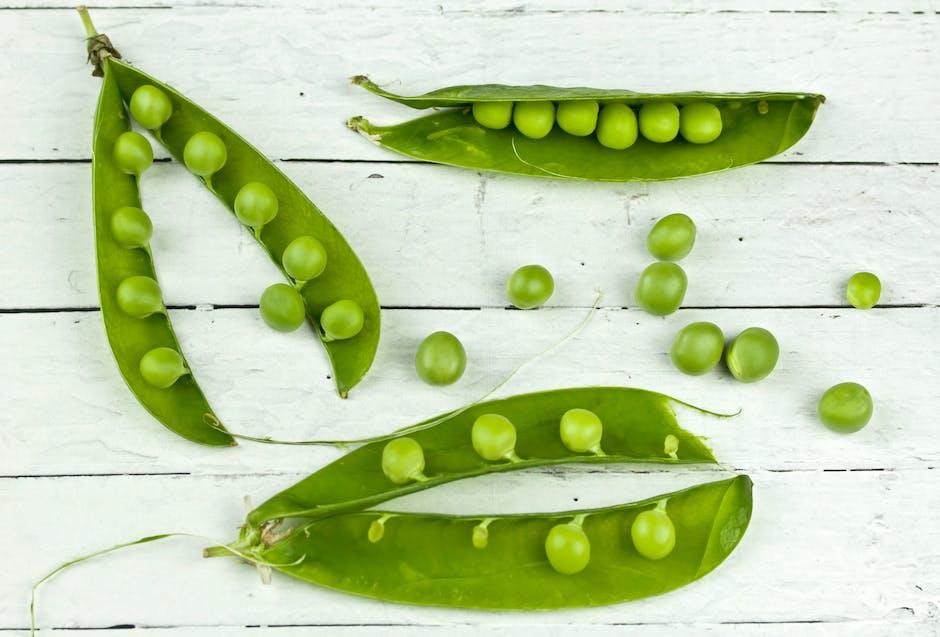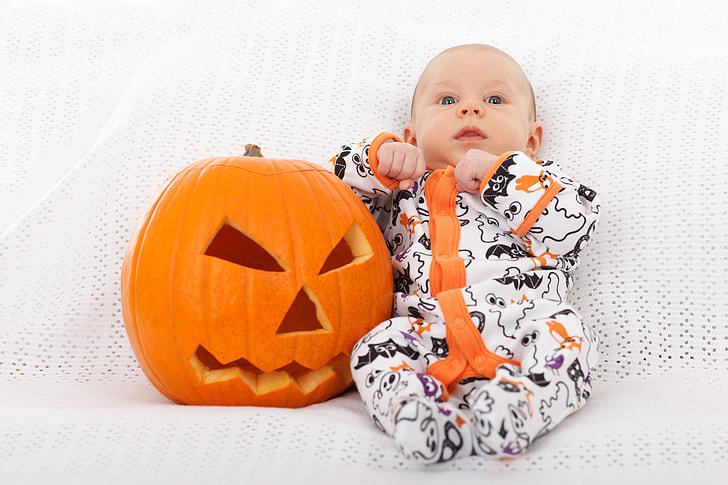Are peas a choking hazard for babies? This is a question that many parents and caregivers ask themselves when it comes to feeding their little ones. It is an important one to consider, as choking can be a life-threatening emergency. In this article, we will discuss the potential dangers of feeding peas to babies and how to safely introduce them into your baby’s diet. We will also explore the various ways in which you can make sure that your baby is safe when eating peas.Yes, peas are a choking hazard for babies. Babies should not be given whole peas until they are at least one year old and have developed the ability to chew and swallow food safely. It is important to cut or mash peas before giving them to a baby, as their small size can make them difficult for a baby to chew and swallow.
Choking Risks for Infants
As infants grow, their need for nutrition increases. Unfortunately, this can also increase the risk of choking due to their lack of coordination and inability to chew food properly. Babies and young children are particularly prone to choking on small items such as coins, buttons, or even toys. Parents should be aware of the potential risks and take extra precautions when feeding their babies and toddlers.
It is important to understand the difference between choking and gagging. Choking occurs when an object becomes lodged in the throat, blocking airflow into the lungs. Gagging is a reflex reaction that occurs when something touches the back of your throat or irritates it. While gagging can be uncomfortable for some babies, it doesn’t necessarily indicate a choking hazard.
The best way to prevent your baby from choking is to ensure that they are fed age-appropriate foods that are cut into small pieces or mashed up until they are soft enough for your baby to swallow without difficulty. Avoid giving your baby foods that could easily become lodged in their throat such as nuts, popcorn, hard candies, raw carrots, or grapes; these should be cut into very small pieces if given at all. If you’re giving your baby finger foods like crackers or toast sticks, make sure they are broken into small pieces that won’t pose a choking hazard.
It is also important to supervise young children while they are eating and playing with toys; this will help prevent them from putting anything in their mouths that could cause them to choke. Make sure any toys you give your baby or toddler do not contain any small parts or components that could become loose and pose a choking hazard when swallowed or inhaled.
Finally, it is essential to have basic first aid training so you know how to respond in case of an emergency situation involving choking. Learn basic life-saving techniques such as abdominal thrusts (the Heimlich maneuver) so you can react quickly if needed.
By taking these precautions and being aware of potential choking hazards, parents can help keep their babies safe while ensuring they get the nutrition they need as they grow and develop.
The Size of Peas and Choking Risk
Peas are one of the most common vegetables, and they are also a popular choice for babies and toddlers. While peas can be a nutritious and tasty snack, they can also pose a choking hazard for young children. It is important to understand the size of peas and the potential choking risk they can present.
Peas come in a variety of sizes, but small ones are typically used as baby food. Small peas, such as those used in baby food, can easily become lodged in the throat if not chewed properly. The size of these peas makes them particularly dangerous for young children who may not have developed their chewing skills yet.
To help reduce the risk of choking on peas, it is important to supervise young children when eating them. Make sure that they are chewing their food properly before swallowing it and that all pieces have been broken down into small enough pieces to avoid becoming lodged in the throat. Additionally, it is best to avoid giving babies or toddlers whole peas as these can be too large for them to chew properly and could cause a choking hazard.
When preparing meals with peas, it is also important to consider how large the pieces should be cut. For older children, larger pieces may be fine if they are cooked well enough that they are soft enough for them to chew properly. However, for younger children or babies who have not yet developed their chewing skills, smaller pieces should be cut so that they can break down easier when chewed.
Overall, understanding the size of peas and potential choking risk associated with them is important when feeding young children or babies. Supervising them while eating is always recommended and cutting smaller pieces is advised whenever possible. By taking these precautions, parents can help ensure safety while still providing nutritious snacks like peas for their loved ones.
Introducing Peas
Introducing peas to your baby’s diet is an important step in their nutritional journey. Peas are a great source of vitamins and minerals, and their natural sweetness can be a great transition food for babies who are just starting to explore solid foods. But when is the right time to introduce peas?
The American Academy of Pediatrics recommends introducing peas around six months of age, once your baby has already been introduced to other single-grain cereals such as oatmeal or barley. This is usually around the same time that babies are ready for more solid foods in general. Before introducing peas, it’s important to make sure your baby can sit up with support and has good control over their head and neck muscles.
When introducing peas, it’s best to start with a puree made from canned or cooked fresh peas. You can also try adding some of the cooked puree to other foods such as yogurt or rice cereal to make them more appealing. If using canned peas, be sure to rinse them thoroughly before cooking. As your baby gets used to eating peas, you can gradually increase the texture until they are able to handle soft chunks of cooked pea.
It’s important to wait until your baby is ready before introducing any new food, including peas. Introducing solids too early may lead to digestive issues and an inability to accept different textures and flavors in the future. Keep in mind that every child develops differently, so it’s important to talk with your pediatrician if you have any questions or concerns about introducing new foods into your baby’s diet.
By following these guidelines, you can ensure that introducing peas into your baby’s diet is a safe and enjoyable experience for both of you!
How to Prepare Peas Safely for Babies
Introducing solid foods to babies is an exciting milestone for both the baby and parents, and peas can make a great first food. Peas are easy to prepare and provide many essential nutrients for your baby, including iron, zinc, vitamin A, and folate. However, it is important to prepare peas correctly before introducing them to your baby’s diet.
Peas should be cooked until they are soft enough for your baby to eat. You can cook fresh or frozen peas in boiling water until soft; this usually takes between 5-10 minutes. Once the peas are soft, drain them in a colander and mash them with a fork or potato masher until they are of a texture that is suitable for your baby. For younger babies, it is best to make sure there are no lumps in the mashed peas. If you prefer a smoother texture for younger babies you can puree the mashed peas in a blender or food processor with some breast milk or formula.
When introducing new foods to your baby’s diet it is important to introduce one new food at a time so that if there is an allergic reaction you know which food caused it. Introduce only one new food every 3-4 days and record how much of the new food your baby ate each time as well as any reactions they had. Pay close attention to any signs of allergies such as diarrhea, rashes or vomiting. If you notice any of these signs then stop introducing that food immediately and seek medical advice from your doctor.
Once you have introduced peas successfully into your baby’s diet then begin experimenting with different flavors by adding herbs and spices such as parsley, thyme, dill, oregano or garlic powder. You can also try mixing mashed peas with other vegetables such as carrots or potatoes for added nutrients and flavors. As with all other foods served to babies it is important not to add any salt when preparing mashed peas.
By following these simple steps you can easily introduce mashed peas into your baby’s diet safely and enjoy watching them experience this exciting milestone in their lives!
Feeding Peas to Babies
Peas are an excellent source of nutrition for babies, as they are packed with vitamins, minerals, fiber, and protein. When introducing peas to your baby’s diet, it is important to ensure that the peas are cooked properly and mashed up into a puree or mashed consistency. Here are some tips on feeding peas to babies:
1. Make sure the peas you serve your baby are cooked thoroughly. Overcooked peas may become too soft and mushy for babies to chew on their own.
2. Use either fresh or frozen peas for best results. If using frozen peas, make sure they are defrosted completely before cooking.
3. When preparing the peas for your baby, steam or boil them until they are soft and easily mashed with a fork. Avoid adding any salt or sugar to the cooking water when preparing the peas for your baby.
4. Once cooked, mash the peas with a potato masher or food processor until they reach a smooth consistency that is safe for your baby to eat without choking hazards. Alternatively, you can also purchase pre-made pea purees from most grocery stores and supermarkets that can be used as a convenient and nutritious option for feeding your baby.
5. Start by offering small amounts of pea puree at each mealtime and gradually increase the amount over time as your baby gets used to eating solid foods like vegetables and fruits.
6. Introducing new foods can sometimes be difficult for babies so it’s important to be patient when introducing new flavors and textures into their diet. If your baby doesn’t seem to like the taste of pea puree at first, try mixing it with other foods such as sweet potatoes or carrots in order to make it more palatable for them
Health Benefits of Eating Peas
Peas are one of the healthiest vegetables available and can be enjoyed in a variety of dishes. They are packed with essential vitamins and minerals, making them a great addition to any diet. Peas are also low in calories and high in fiber, which can help with digestion and weight management. Furthermore, peas contain high amounts of antioxidants, which can help protect against certain diseases. Additionally, they may have anti-inflammatory properties, helping to reduce inflammation in the body.
Eating peas regularly can provide a number of benefits for overall health. For example, peas are an excellent source of plant-based protein, which is essential for building muscle and maintaining strong bones. They are also high in iron, magnesium, potassium, and zinc, all of which play important roles in keeping the body functioning properly. Additionally, peas are rich in folate and vitamin C, both of which help support the immune system.
Peas also contain a number of phytonutrients that have been linked to various health benefits. For instance, some studies have suggested that consuming pea extracts may help improve cognitive function and reduce the risk of age-related memory decline. Furthermore, other research has suggested that eating peas regularly may lower blood pressure and reduce the risk of stroke or heart attack.
Overall, eating peas can be a great way to boost your overall health and wellbeing. They are packed with essential vitamins and minerals that can help support your body’s functions while providing numerous other potential health benefits as well. Adding more peas into your diet is an easy way to get more nutrients into your meals without adding extra calories or fat.
Alternatives to Feeding Peas to Infants and Toddlers
Parents know that peas are a good source of nutrition for infants and toddlers, but there are other alternatives to feeding them. Parents can look for other foods that provide the same nutrients as peas, or opt for different methods of introducing food to their child. Here are some alternatives to feeding peas:
Pureed fruits and vegetables
Pureed fruits and vegetables are an easy way to introduce new flavors and textures to babies. They can be mashed up with just a fork or blended in a food processor. Bananas, applesauce, sweet potatoes, squash, carrots and more can all be pureed for babies.
Finger foods
Finger foods are an excellent alternative to purees as they give babies the opportunity to explore different textures and tastes with their hands. Toast strips, cooked pasta shells, steamed broccoli florets or diced soft fruits are all great finger food options for toddlers.
Smoothies
Smoothies make a great snack option for babies and toddlers alike. You can mix together fruits like bananas or strawberries with yogurt or nut butter for a healthy snack that packs lots of nutrients into one cup. For younger babies, you can thin out the smoothie with some breast milk or formula to make it easier to swallow.
Soft cooked meats
Soft cooked meats like chicken or turkey can be shredded into small pieces with a fork and served as finger foods or as part of a meal. They’re also high in protein, which is important for growing children.
No matter what food parents choose for their baby or toddler, it’s important that they continue offering variety in order to ensure their child is getting all the necessary nutrients needed for proper development.

Conclusion
Peas are a choking hazard for babies. It is important to remember that peas are small and hard, and can easily be a choking hazard for young children. Babies should always be supervised when eating peas, as they can easily become lodged in the throat or airway. Parents should also ensure that their babies are eating properly prepared peas, as raw and undercooked peas may cause a choking hazard. Peas should never be given to babies who do not have the ability to chew well or who cannot sit up unassisted. Finally, it is important to seek medical attention immediately if a baby chokes on a pea.
Overall, it is essential for parents and caregivers to understand the potential risks associated with feeding peas to young children. Although they may be nutritious and delicious, parents need to take the necessary precautions in order to avoid any potential danger from choking on them. By taking the proper precautions, parents can ensure that their children are safe while enjoying this tasty vegetable.




